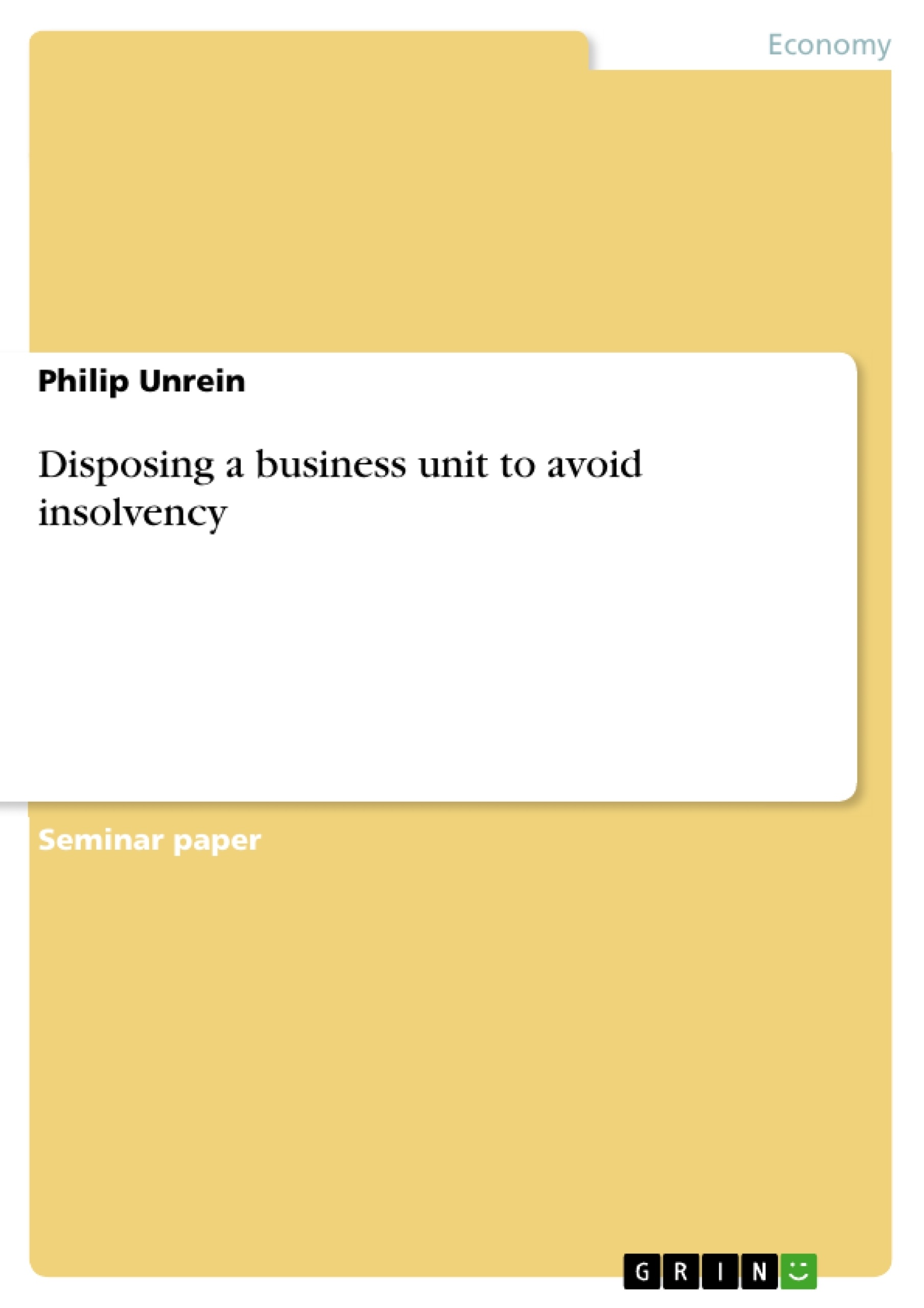In this assignment a business is assumed operating across a number of different business units and facing liquidity issues according to its business plan forecast. To investigate the challenge of avoiding insolvency, the paper is divided into four chapters. The first part deals with the fundamentals of insolvency as well as the basics concerning management information systems (MIS). Based on the fundamental information, the main part is focused on tools to defeat the threat of insolvency. Firstly, it will be pointed out how MIS can be used to monitor the triggers of an insolvency. In this connection MIS in terms of risk management systems (RMS) will be discussed. Subsequently, it will be shown how the disposal of a business unit is a further alternative to avoid insolvency. In the final chapter the main results will be summarized.
Inhaltsverzeichnis (Table of Contents)
- 1 Introduction
- 2 Fundamentals
- 2.1 Insolvency of a business
- 2.1.1 Triggers of an insolvency
- 2.1.2 Different types of a crisis
- 2.2 Management information system
- 2.1 Insolvency of a business
- 3 Tools to avoid insolvency of a business
- 3.1 Risk management system
- 3.2 Disposal of a business unit
- 4 Summary
Zielsetzung und Themenschwerpunkte (Objectives and Key Themes)
This seminar paper examines the critical issue of business unit disposal as a strategy to prevent insolvency. The paper aims to provide a comprehensive understanding of the factors leading to insolvency, the tools available to mitigate such risks, and the specific process of disposing a business unit to avoid financial distress.
- Triggers and types of insolvency
- The role of a management information system in identifying and mitigating risks
- Risk management systems as a tool for avoiding insolvency
- The process and considerations involved in disposing a business unit
- The potential benefits and challenges associated with business unit disposal
Zusammenfassung der Kapitel (Chapter Summaries)
The paper begins by introducing the topic of business unit disposal as a means to avoid insolvency. Chapter 2 delves into the fundamentals of insolvency, outlining the triggers that can lead to a company's financial distress, including both internal and external factors. It also examines different types of crises that businesses might face, focusing on the role of a management information system in identifying and responding to these challenges.
Chapter 3 explores various tools and strategies for preventing insolvency. This chapter covers risk management systems and their importance in mitigating financial risks. The focus shifts towards the specific process of disposing a business unit, analyzing the reasons, procedures, and considerations involved in such a decision. The paper examines the impact of this strategy on the overall business and the potential benefits and drawbacks.
Schlüsselwörter (Keywords)
Insolvency, business unit disposal, risk management, financial distress, management information system, crisis management, strategic decision-making.
- Quote paper
- Philip Unrein (Author), 2016, Disposing a business unit to avoid insolvency, Munich, GRIN Verlag, https://www.grin.com/document/385420



